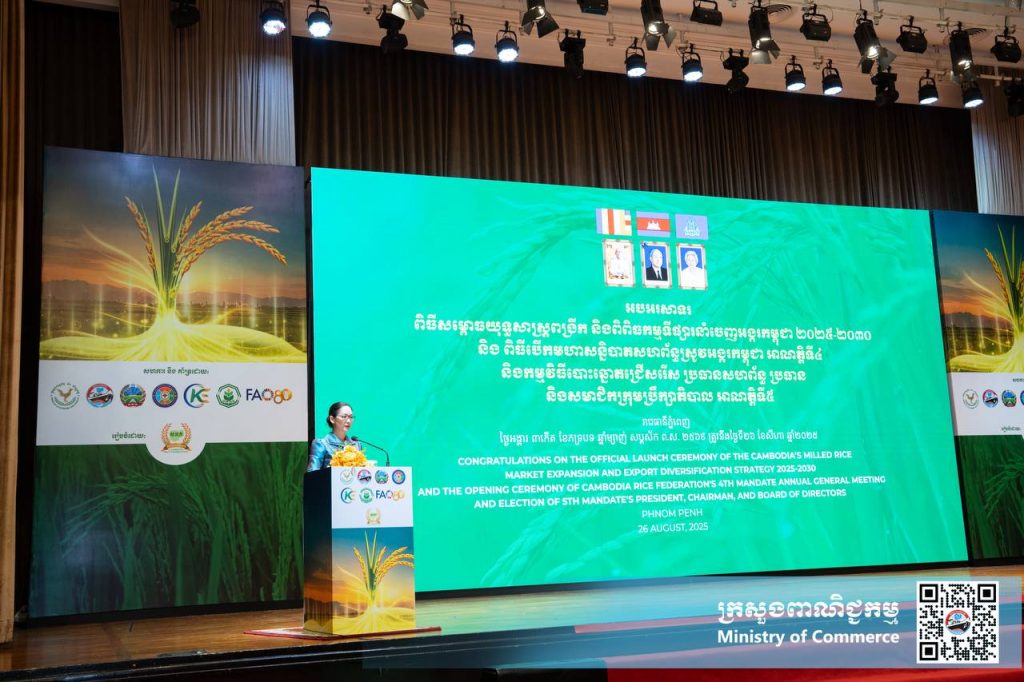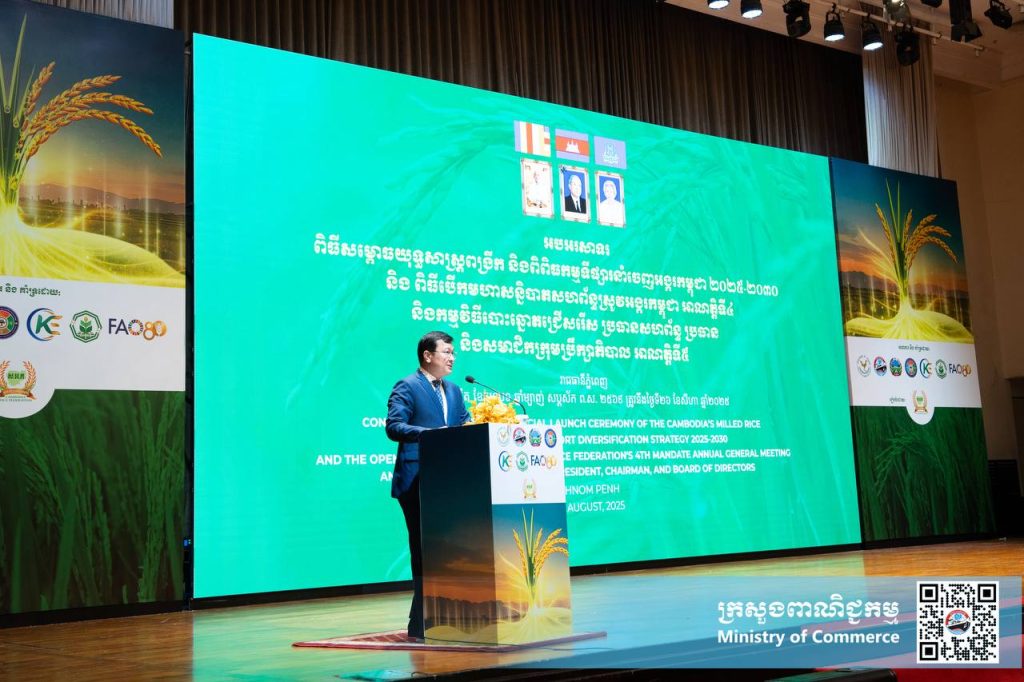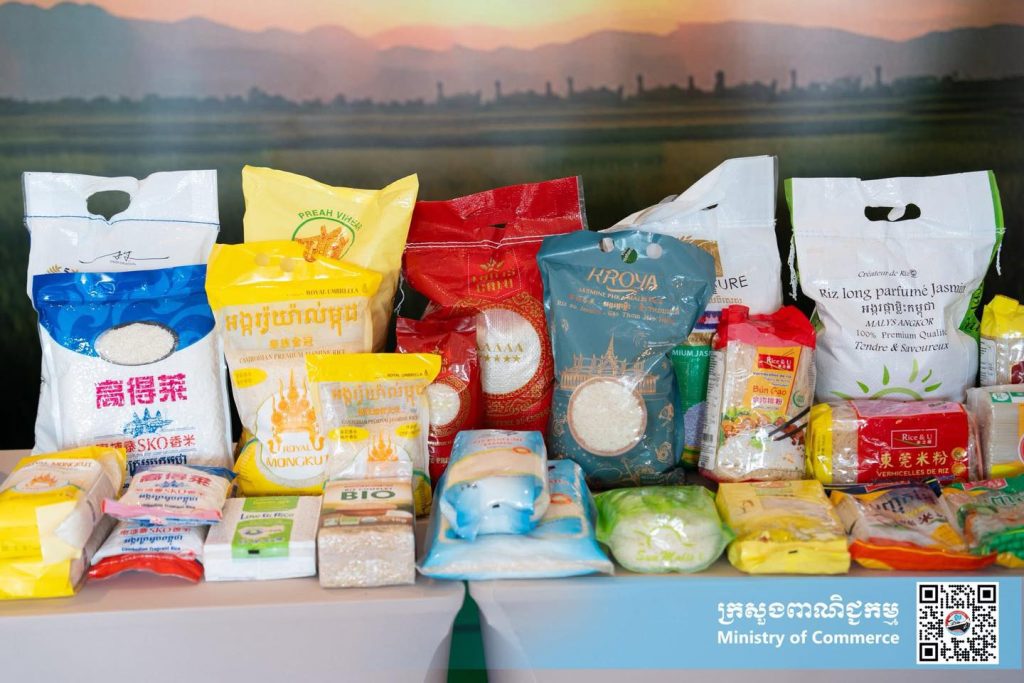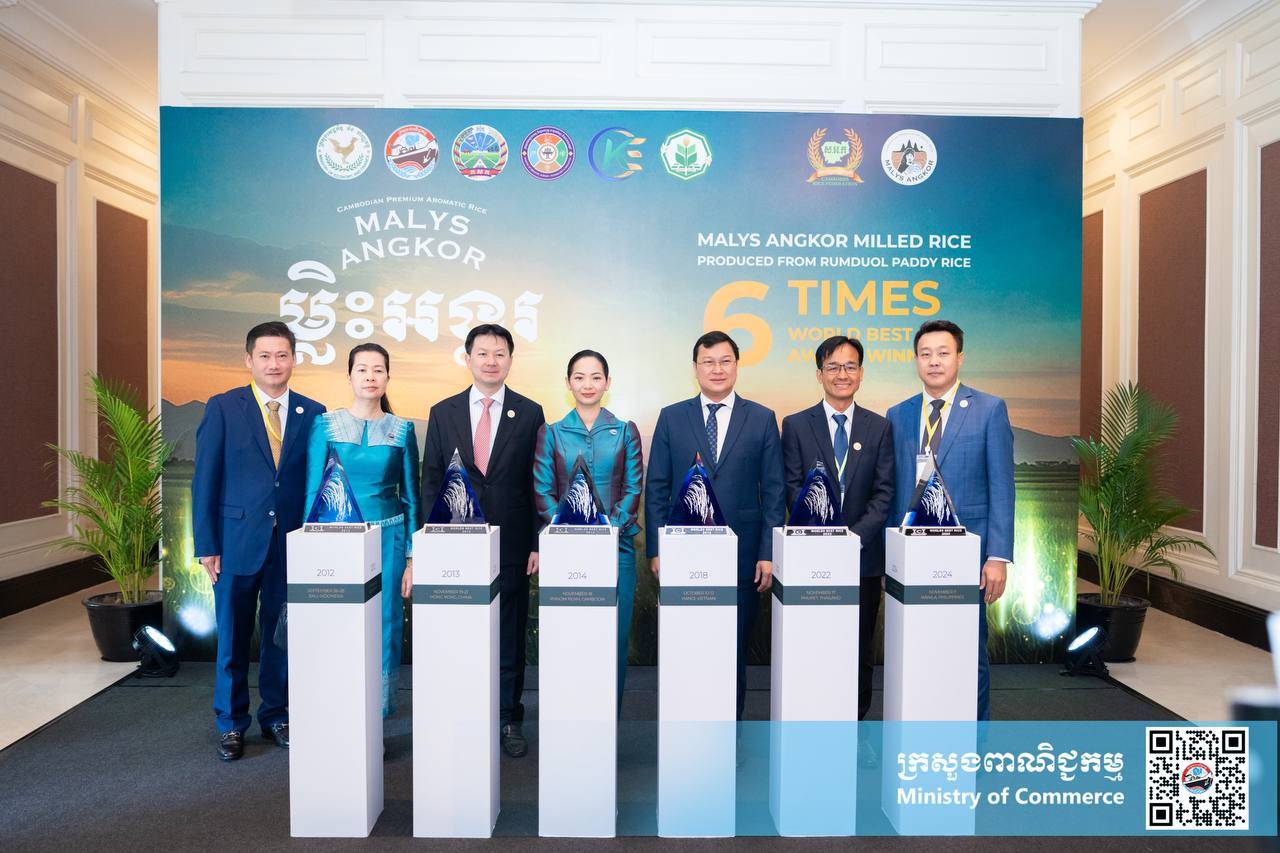Cambodia Investment Review
Cambodia has rolled out a new five-year plan to expand its premium rice exports, seeking to capture the purchasing power of Asia’s rising middle-class consumers and diversify its export markets. The initiative, known as the Milled Rice Market Expansion and Export Diversification Strategy 2025–2030, was officially launched on Tuesday by the Ministry of Commerce and the Ministry of Agriculture.
The plan sets out three core priorities: strengthening Cambodia’s share in traditional fragrant rice markets, expanding sales to Asia’s middle-income consumers, and leveraging regional and global trade agreements to unlock new opportunities.
Building on China’s Demand
Minister of Commerce Cham Nimul said Cambodia’s premium rice sector has already established a strong foothold in China, which accounted for about 30% of Cambodia’s total rice exports in 2024. Earlier this year, Cambodia and China signed their seventh Memorandum of Understanding, covering 500,000 tonnes of Cambodian rice exports for 2025, reflecting Beijing’s sustained demand.
Read More: EuroCham Event Explores Agri-Tech Investment and Innovation in Cambodia
Data from the Cambodia Rice Federation (CRF) show that during the first seven months of 2025, Cambodia exported 420,572 tonnes of milled rice worth $309 million to 65 countries and territories. China alone absorbed 100,000 tonnes, valued at $62.1 million.

Nimul said private-sector participation will be critical to achieving the targets set out in the new strategy. Cambodia has already signed a bilateral free trade agreement with China and is part of the Regional Comprehensive Economic Partnership (RCEP), the world’s largest trading bloc, providing tariff advantages and greater access to regional markets.
She added that additional channels, including government-to-government procurement, UN food security programs, and humanitarian aid mechanisms, could also expand Cambodia’s reach into new markets.
Prioritizing Premium and Fragrant Varieties
Minister of Agriculture Dith Tina underscored that Cambodia’s competitive edge lies in its premium and fragrant rice varieties, which command higher value in international markets. Unlike other major producers that compete on volume, Cambodia is positioning itself as a quality-driven exporter.
“Focusing on quality helps deliver better value for mills and direct profits to farmers,” Tina said. He encouraged millers and exporters to place greater trust in Cambodia’s strategic varieties, such as Phka Rumduol, to further raise the country’s global reputation.

To ensure consistency and reliability of supply, the Ministry of Agriculture will continue to promote contract farming schemes and modern agricultural cooperatives, which aim to link farmers directly to markets and help them meet international quality and safety standards.
Safeguarding Reputation and Standards
Commerce Minister Nimul also stressed the importance of maintaining strict standards on quality, safety, and packaging to protect Cambodia’s brand in international markets. She warned against the overuse of chemicals and practices that could compromise export credibility, saying even small breaches could undermine years of progress in building Cambodia’s reputation for premium rice.
Industry analysts note that Cambodia’s challenge will be to balance rising costs of production with maintaining competitiveness, particularly as global rice markets are influenced by supply fluctuations from major producers such as Thailand, Vietnam, and India.






